- Home
- Freight Calculator
Get Fast and Reliable FREE Rate Request
with Our Freight Calculator Tool
Smith Lewis provides free online freight and international container shipping quotes for your convenience. Our freight calculator tool allows customers to receive these quotes within 5 seconds after submission:
- LCL ( Less Than Container Load) Freight Quotes
- FCL (Full Container Load) Freight Quotes
- Customs Clearance Quotes
How to Use Our LCL Freight Calculator
Here is a helpful guide on how to use our Freight Calculator for your LCL shipping quotes assessment.
- Choose LCL Freight Calculator
in Freight Quote Tab. - Select "To/From Australia."
- Select an Origin Port.
- Select a Destination Port.
- Enter approximate weight in Kilograms.
- Enter approximate volume in Cubic Meter.
-
Click on "Get Quote Now" button.
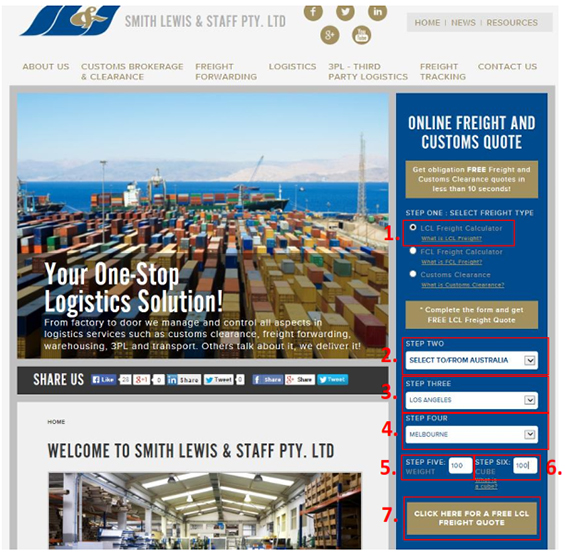
Steps 1 to 7: How to Use our LCL Freight Calculator
- Upon clicking on the "Get Quote Now" button, you will be redirected to the Send My Rate Page. Enter your email address at the quote receipt section.
- Confirm your email address by entering it once again.
-
Hit the "Show Me My Rate" button.
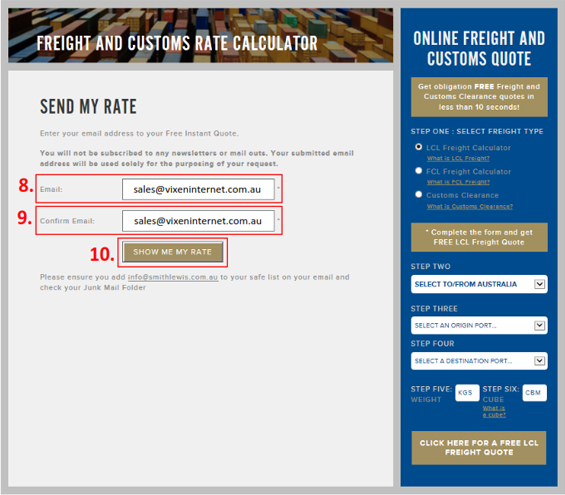
Steps 8 to 10: How to Use our LCL Freight Calculator
-
A confirmation code page will appear informing you of the email you used and for you to check your rate using that email address.
NOTE: If you have placed an incorrect email address, our system provides you the option to change it. Simply click the "Change My Email" button to input your correct email address. Otherwise, you may open your inbox and see your FREE LCL rate quote.
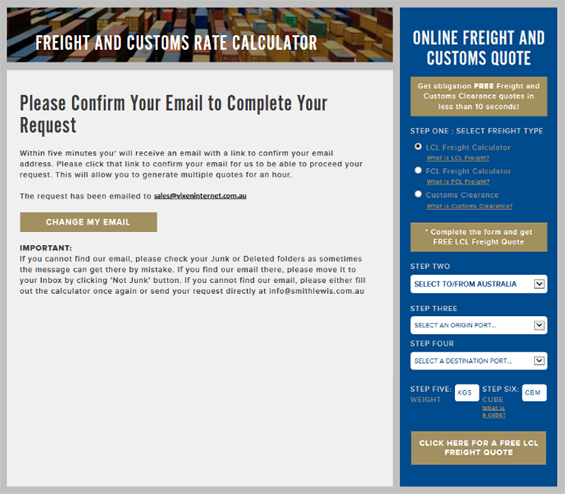
Final Step: How to Use our LCL Freight Calculator
- After confirming email address (which is clicking on the link sent to your email address), a Freight Quote Detail Receipt window will pop up and a copy of the receipt will be sent to email address.
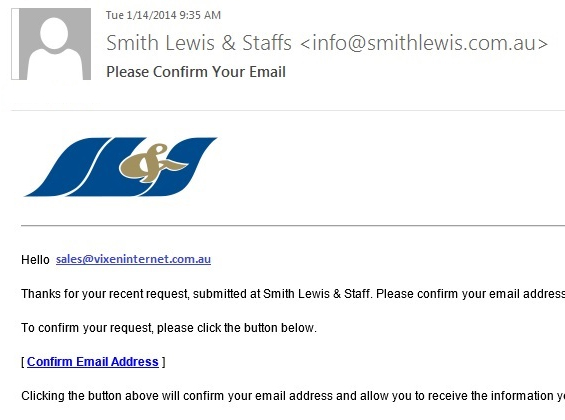
Sample of LCL Freight Calculator Free Freight Quote
Sample of LCL Freight Calculator Free Freight Quote Details
This is an example of the FREE LCL freight quote detail you will receive in your inbox.
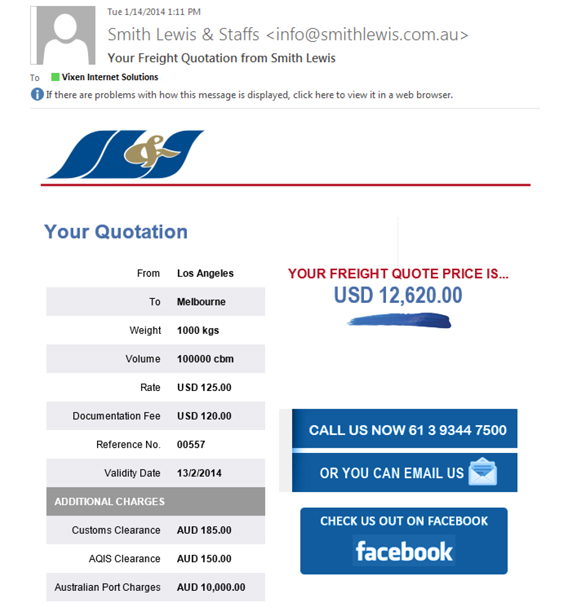
LCL Freight Calculator Email Confirmation
How to Use Our FCL Freight Calculator
Here is a helpful guide on how to use our Freight Calculator for your FCL shipping quotes assessment.
- Choose FCL Freight Calculator in Freight Quote Tab.
- Select "To/From Australia."
- Select a Container Type.
- Select an Origin Port.
- Select a Destination Port.
-
Click on "Get Quote Now" button.
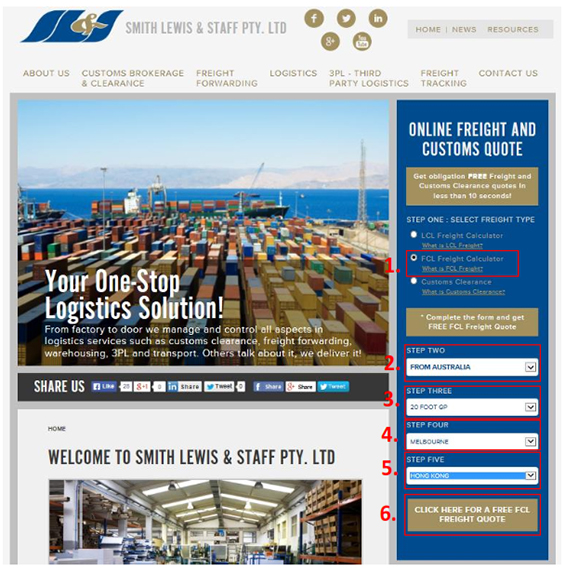
Steps 1 to 6: How to Use our FCL Freight Calculator
- Upon clicking on the "Get Quote Now" button, you will be redirected to the Send My Rate Page. Enter your email address at the quote receipt section.
- Confirm your email address by entering it once again.
-
Hit the "Show Me My Rate" button.
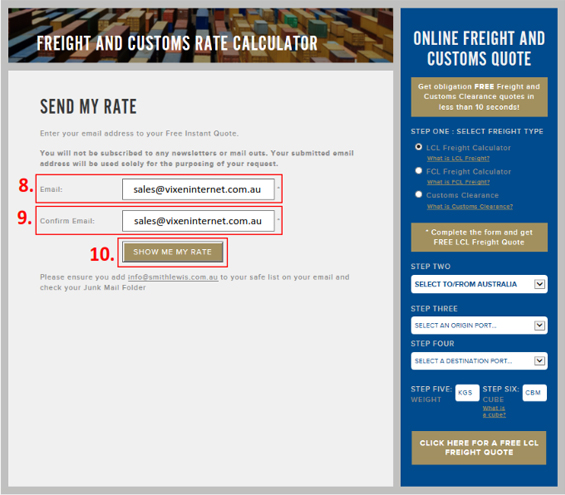
Steps 7 to 9: How to Use our FCL Freight Calculator
-
A confirmation code page will appear informing you of the email you used and for you to check your international container shipping quote rate using that email address.
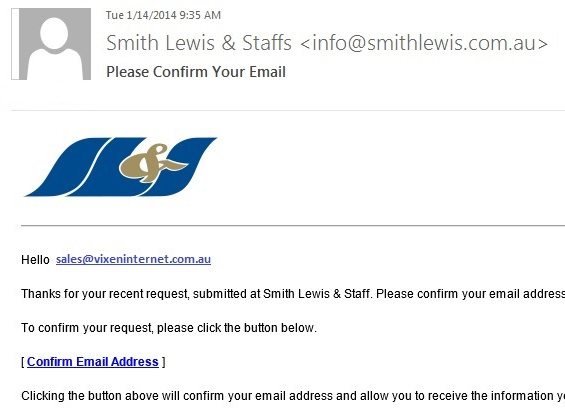
Final Step: How to Use our FCL Freight Calculator
NOTE: If you have placed an incorrect email address, our system provides you the option to change it. Simply click the "Change My Email" button to input your correct email address. Otherwise, you may open your inbox and see your FREE FCL rate quote.
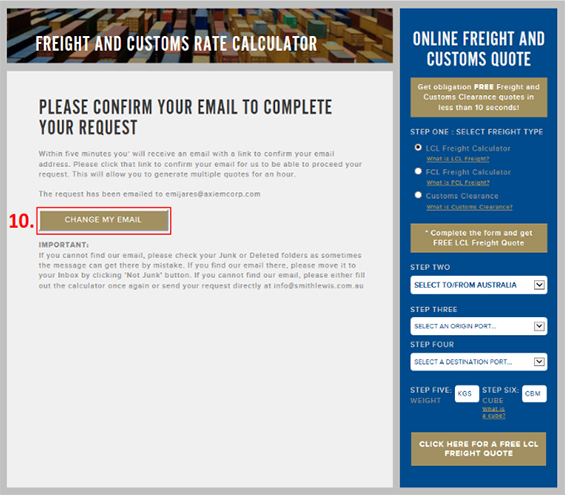
Final Step: How to Use our FCL Freight Calculator
Sample of FCL Freight Calculator Free International
Shipping Quote Details
This is an example of the FREE FCL international container shipping quote detail you will receive in your inbox.

Sample of FCL Freight Calculator Free International Shipping Quote Freight Quote
How to Use Our Customs Clearance Calculator
Here is a helpful guide on how to use our Customs Clearance Calculator for your customs clearance quotes assessment.
- Choose "Customs Clearance" in Freight Quote tab.
- Select a Customs Clearance Type.
- Click on "Get Quote Now" button.
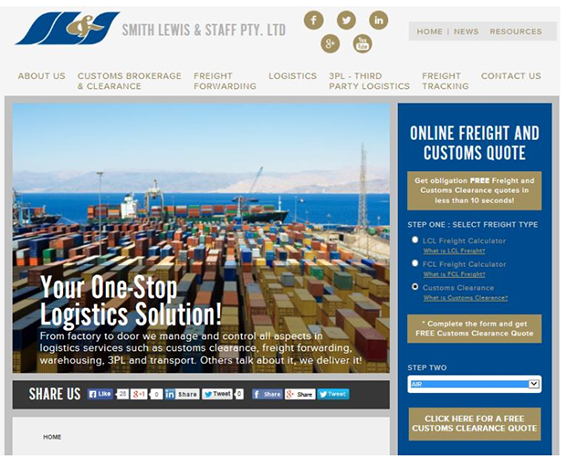
Steps 1 to 3: How to Use our Customs Clearance Calculator
- Upon clicking on the "Get Quote Now" button, you will be redirected to the Send My Rate Page. Enter your email address at the quote receipt section.
- Confirm your email address by entering it once again.
-
Hit the "Show Me My Rate" button.
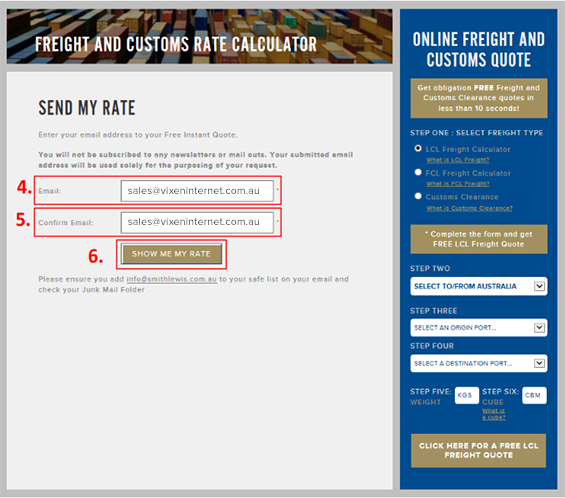
Steps 4 to 6: How to Use our Customs Clearance Calculator
-
A confirmation code page will appear informing you of the email you used and for you to check your rate using that email address.
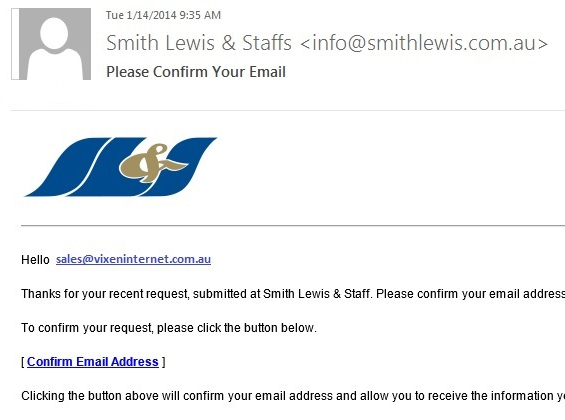
Customs Clearance Calculator Email Confirmation
NOTE: If you have placed an incorrect email address, our system provides you the option to change it. Simply click the "Change My Email" button to input your correct email address. Otherwise, you may open your inbox and see your FREE Customs Clearance rate quote.
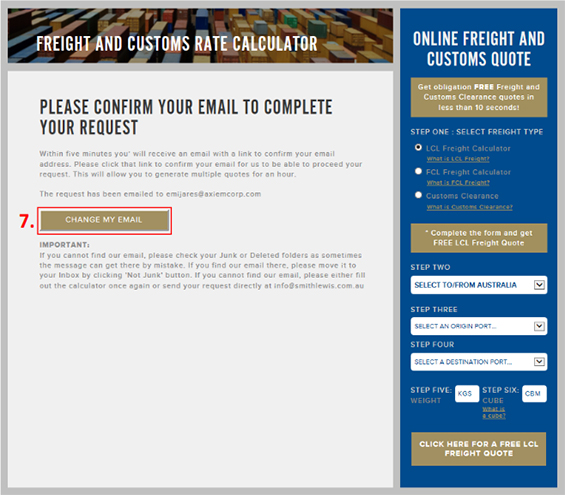
Final Step: How to Use our LCL Freight Calculator
Sample of Customs Clearance Calculator Free Quote Details
This is an example of the FREE customs clearance quote detail you will receive in your inbox.
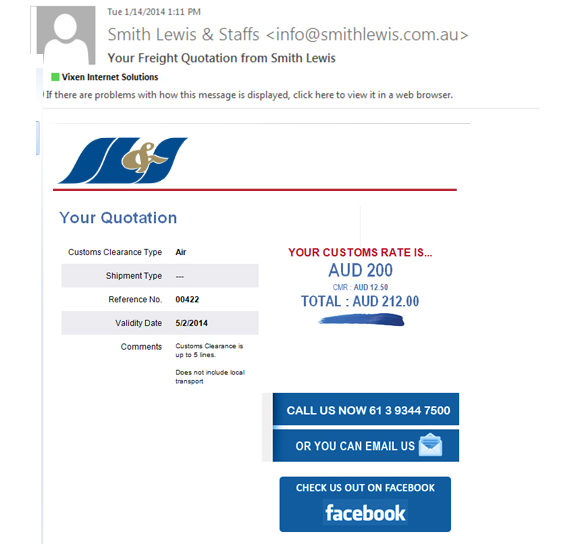
Final Step: Sample of Customs Clearance Calculator Free Quote
Get Your FREE Freight Quote Now. Fill out the form below:
Glossary of Most Common Logistics Terms
Australian Quarantine Inspection Service (AQIS)
The former government body in Australia established to protect Australia from contaminated flora and fauna. This is now called Department of Agriculture, Fisheries and Forestry (DAFF).
Bill of Lading (BOL or B/L)
A bill of lading is a binding contract that serves three main purposes:
- a receipt for the goods delivered to the transportation provider for shipment;
- a definition or description of the goods; and
- evidence of title to the relative goods, if "negotiable"
CIF (Cost/Insurance/Freight)
Supplier pays all costs of getting the goods to the Australia Port/Airport. All other costs for local charges, cartage to your premises and customs clearance in Australia are to the buyer
C & F (Cost and Freight)
As above but no insurance is covered by the supplier.
Cube (Cubic Meter)
Freight rate computed on the basis of a cargo's volume, instead of its weight. A cube is 1 cubic meter of space.
Department of Agriculture, Fisheries and Forestry (DAF)
Federal Government department offering information on business in agricultural industries. Includes grants, media centre, publications and ministers. It also includes protecting Australia from contaminated flora and fauna.
DAP (Delivered at Place)
This term was originally called DDU (deliver duty unpaid). Supplier pays all costs to your door EXCLUDING customs clearance costs and duties/taxes
DDP (Delivery Duty Paid)
Supplier pays all costs to your door including customs clearance and duties/taxes.
Electronic Data Interchange (EDI)
The electronic transmission of routine business documents, such as purchase orders, invoices and bills of lading, between computers in a standard format.
EXW (Ex Works)
Buyer pays all the costs to move the goods from the supplier's factory to their door.
FOB (Free on Board)
Supplier pays all costs of getting the goods loaded onto the Vessel / Plane. All other costs for international freight/local charges, cartage to your premises and customs clearance in Australia are to the buyer.
Full Container Load (FCL)
A container that is fully loaded for one consignee.
Less Container Load (LCL)
A container that is loaded for multiple consignees.
Luxury Car Tax (LCT)
This is a tax paid to the Australian Government for the purchase or import of luxury cars.
Roll On Roll Off (RORO)
This shipping method is commonly used in transporting wheeled cargo, such as automobiles, trucks, semi-trailer trucks, trailers, and railroad cars, that are driven on and off the ship on their own wheels.




